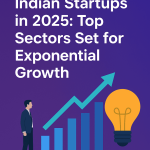I. A Surge of Investment: Hyperscalers Go All In
The AI infrastructure race in the U.S. has ignited unprecedented capital deployment from tech giants. Into 2025:
- Microsoft is pouring $80 billion into AI-enabled data centers for fiscal 2025, with more than half earmarked for the U.S. Reddit+1.
- Amazon plans over $100 billion in AI investments for 2025, primarily to expand AWS infrastructure Reddit+1.
- Combined figures show that U.S. hyperscalers are forecasted to invest around $325 billion in CapEx in FY25—breakdown: Amazon $105B, Microsoft $80B, Google $75B, Meta $65B Reddit.
This financial surge isn’t mere hype—it’s reshaping the very infrastructure of AI across the nation.
II. The Stargate Project: A Giant Leap for AI Infrastructure
A headline-making initiative, Project Stargate—a joint venture between OpenAI, Oracle, and SoftBank (backed by Microsoft, Nvidia, and Arm)—targets up to $500 billion in AI infrastructure investment over four years Business InsiderLinkedInReddit.
Initially launching with a $100 billion commitment, the Stargate initiative promises to construct next-gen data centers across Texas and beyond, and potentially create hundreds of thousands of jobs RedditBusiness Insider.
III. Federal Backing: Power, Permits & Policy
Recognizing AI’s demands, the federal government has ramped up support:
- An executive order signed by President Biden to lease federal lands for gigawatt-scale AI data centers and associated clean power facilities. These sites will accelerate AI infrastructure deployment while enhancing national security and AI safety Reddit.
- The order also mandates companies using these lands to purchase U.S.-made semiconductors, aligning infrastructure growth with domestic tech manufacturing.
IV. U.S. Manufacturing Gets a Boost—Nvidia Leads the Charge
In a strategic pivot, Nvidia announced plans—just months ago—to manufacture AI supercomputers and Blackwell chips in the U.S. for the first time. The company has secured over 1 million square feet of manufacturing space across Arizona and Texas, aiming to build up to half a trillion dollars in AI infrastructure over four years. This expansion is projected to create hundreds of thousands of jobs and strengthen supply chain resilience AP News.
V. Regional Hotspots & Infrastructure Trends
AI infrastructure isn’t just concentrated in Silicon Valley. Recent industry analyses spotlight emerging hubs and strategic trends:
- Regions like Texas, Arizona, Ohio, Iowa, and Oregon are attracting major builds due to abundant renewables, favorable grid stability, and incentives Land Values Insider.
- Key metro areas—Northern Virginia, Dallas, Silicon Valley, Phoenix, and Chicago—remain core zones of activity. Emerging alternatives such as Atlanta, Salt Lake City, Columbus, and Reno are gaining traction due to reduced congestion and faster permitting BuildCheck.
- Sustainability is being baked into development too: hyperscalers are pursuing carbon-neutral goals by 2030, retrofitting legacy sites, using liquid cooling, and deploying digital twin and AI-driven operational systems BuildCheckkanpeki.ae.
VI. Economic Ripple Effects & Job Dynamics
The economic ripple from these investments is immense—but nuanced:
- The Washington Post estimates that AI spending of over $350 billion in 2025 could boost U.S. GDP by 0.7%, accounting for half of the Federal Reserve’s growth forecast The Washington Post.
- Still, data centers—particularly those focused on AI workloads—are not job magnets long-term. Take the Stargate facility in Abilene, TX: it employed about 1,500 workers during construction, but will require just ~100 full-time staff after completion Wall Street Journal.
- A broader CIO survey reveals that while 93% expect AI spending to rise in 2025, more than half caution that roles in IT administration, support, and help-desk are at risk of elimination due to AI efficiency gains Barron’s.
VII. Balancing Opportunity and Risk
This massive infrastructure push brings promise—and potential pitfalls:
- Power demand is soaring. Data centers globally consumed ~3% of electricity, with AI workloads consuming 10–20× more per server than general cloud systems LinkedInkanpeki.ae. The Biden order to streamline power and grid access is a critical response Reddit.
- Experts raise red flags about overbuilding, low utilization, and energy strain, calling attention to feasibility and long-term ROI, especially with specialized infrastructure that lacks flexibility LinkedInMedium.
- Supply chain bottlenecks, especially in chips, persist—raising concerns about delays and underutilized builds kanpeki.aeLinkedIn.
Our views on this :
The AI Infrastructure Boom in the U.S. during 2025 marks one of the most transformative ebbs in technology and capital deployment in modern history. With hundreds of billions in investments, federal backing, and expanding regional hubs, the nation is building a foundation for AI’s future.
Yet, the narrative comes with complexity—navigating job displacement risks, power limitations, overcapacity dangers, and economic dependency on Big Tech. The real winners will be those who balance ambition with sustainability, agility with foresight, and human capital with automation.
Let me know if you’d like visuals, charts, or an infobox to support the blog—or want to deep dive any particular angle further!



